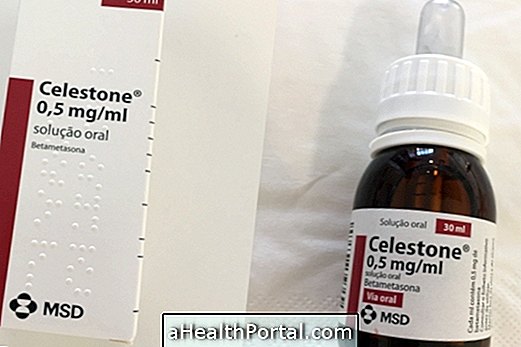Having wet panties in pregnancy or having some type of discharge is quite normal, especially when this discharge is light or whitish, as it happens due to the increase of estrogens in the body, as well as increased circulation in the pelvic region. This type of discharge does not need specific treatment, being only recommended to maintain the usual hygiene care.
The discharge that is not of concern usually has the following characteristics:
- Transparent or whitish;
- Slightly thick, mucus-like;
- Smelless.
Thus, if the discharge presents any difference, such as a greenish color or a foul smell, it is very important to go to the hospital immediately or consult the obstetrician quickly, as it may indicate the presence of any problem that needs to be treated with an infection or a sexually transmitted disease, for example.

When discharge can be severe
Generally, discharge can be a sign of a health problem when it is greenish, yellowish, has a strong smell or causes some type of pain. Some of the most common causes of changes in discharge include:
1. Candidiasis
Vaginal candidiasis is a fungal infection, more specifically the fungus candida albicans, which causes symptoms such as whitish discharge, similar to cottage cheese, intense itching in the genital region and redness.
This type of infection is quite common in pregnancy due to hormonal changes and although it does not affect the development of the baby in the uterus, it needs to be treated to prevent the baby from being contaminated with fungi during childbirth.
- What to do : You should consult your obstetrician or gynecologist to start treatment with ointments or anti-fungal tablets, such as Miconazole or Terconazole, for example. However, some home remedies, such as plain yogurt, can also be used to relieve symptoms and speed up the doctor's recommended treatment.
2. Bacterial vaginosis
Vaginosis is a very common vaginal infection, even during pregnancy, because the change in estrogen levels facilitates the development of fungi and bacteria, especially if there is no proper hygiene of the region.
In these cases, the discharge appears slightly gray or yellowish and smells like rotten fish.
- What to do : You should consult your obstetrician or gynecologist to confirm the diagnosis and to start treatment with safe gestational antibiotics such as Metronidazole or Clindamycin for about 7 days. See more about how this infection is treated.
3. Gonorrhea
This is an infection caused by the bacteria Neisseria gonorrhoeae that is transmitted through unprotected sexual contact with someone contaminated and therefore can arise in pregnancy especially if you have contact with an infected partner. Symptoms include yellowing of the skin, urination, incontinence and presence of lumps in the vagina, for example.
Since gonorrhea can affect pregnancy, increasing the risk of miscarriage, premature delivery or infection of the amniotic fluid, it is very important to start treatment quickly. See what other complications may appear in the baby.
- What to do : If there is a suspicion of infection with a sexually transmitted disease, it is very important to go to the hospital or obstetrician quickly to make the diagnosis and start treatment, which in this case is done with the use of antibiotics such as Penicillin, Ofloxacin or Ciprofloxacin.

4. Trichomoniasis
Trichomoniasis is another sexually transmitted disease that can also occur in pregnancy if there is an intimate relationship without a condom. Trichomoniasis may increase the risk of preterm birth or low birth weight and should therefore be treated as soon as possible.
The most characteristic signs of this infection include greenish or yellowish discharge, redness in the genital area, pain when urinating, itching, and the presence of small vaginal bleeding.
- What to do : You should go to the obstetrician or gynecologist to confirm the diagnosis and start treatment with an antibiotic such as Metronidazole for about 3 to 7 days.
How to differentiate discharge from bag rupture
In order to differentiate the vaginal discharge from the rupture of the pouch, the color and thickness of the liquid must be taken into account:
- Deterioration: it is viscous and may smell or color;
- Aminotic liquid: it is very fluid, without color or a very light yellow, but without smell;
- Mucosal cap: usually yellowish, thick, looking like catarrh or may have traces of blood, having a brownish color being quite different from the releases that the woman may have had in life. More details on: How to Identify the Mucous Cap.
Some women may have small loss of amniotic fluid before labor has started and so if a pocket is suspected it is important to tell the obstetrician so that he can evaluate it. See how to identify if you are going into labor.
In this way, it is important to be careful and put an absorbent to perceive the color, quantity and viscosity of the secretion, as it can also be blood.
When to go to the doctor
It is recommended to go to the gynecologist whenever the woman has the following symptoms:
- Strain with strong color;
- Odor:
- Pain and burning on urination;
- Pain during intimate contact or bleeding;
- When there is suspicion of blood loss through the vagina during delivery;
- When the bag is suspected to rupture.
At the doctor's office, you should inform when the symptoms begin and show the dirty panties so that the doctor can check the color, smell and thickness of the discharge to arrive at the diagnosis and then indicate what measures should be taken.























